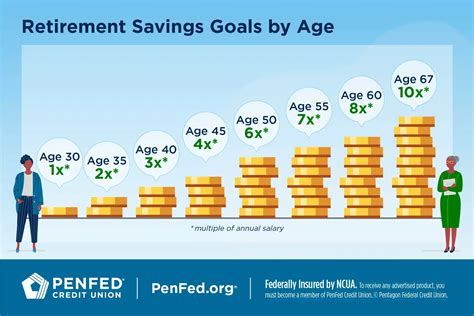
The U.S. housing market is experiencing a pronounced shift, characterized by a surge in homes for sale coupled with a decline in buyer demand, creating an imbalance that could lead to price stagnation or even declines in some areas. This evolving dynamic marks a significant departure from the intense bidding wars and rapidly escalating prices that defined the market for much of the past few years.
The increasing inventory of homes for sale is driven by several factors, including homeowners looking to capitalize on recent price gains and a decrease in affordability due to rising mortgage rates. Simultaneously, buyer demand is waning as potential homebuyers grapple with higher borrowing costs, persistent inflation, and concerns about the overall economic outlook. This combination of increased supply and decreased demand is giving buyers more leverage and cooling down what had been a red-hot market.
Several indicators point to this shift. Redfin data shows that new listings are up significantly year-over-year, while pending sales are down. “Sellers are flooding the market,” the original article states, leading to a build-up of inventory.
The rise in mortgage rates has had a particularly strong impact on affordability. The average 30-year fixed mortgage rate has more than doubled in the past year, significantly increasing the monthly payments for prospective buyers. This has priced many potential buyers out of the market, leading to a slowdown in sales activity.
The effects of this market shift are not uniform across the country. Some areas are experiencing a more pronounced slowdown than others, depending on factors such as local economic conditions, housing supply, and demographics. Markets that saw the most rapid price appreciation during the pandemic are often the ones now experiencing the most significant cooling.
Inventory Surge and Buyer Retreat
The housing market is undergoing a significant transformation as a wave of sellers enters the arena while potential buyers are increasingly hesitant. This imbalance is creating a more competitive environment for sellers and offering more options for those who remain in the market to buy.
One of the primary drivers of the inventory surge is homeowners seeking to capitalize on the substantial price gains witnessed over the past few years. After experiencing record-low mortgage rates and soaring demand, many homeowners are now looking to sell their properties at peak values. This influx of new listings is adding to the overall supply of homes available for sale.
However, the surge in supply is not being met with a corresponding increase in buyer demand. Several factors are contributing to the retreat of potential homebuyers. The most significant is the sharp rise in mortgage rates. As borrowing costs increase, the affordability of homes decreases, pricing many potential buyers out of the market.
In addition to higher mortgage rates, persistent inflation is also weighing on buyer sentiment. Rising prices for essential goods and services are squeezing household budgets, leaving less money available for discretionary spending, including housing. Concerns about the overall economic outlook are further dampening buyer enthusiasm. As the Federal Reserve continues to tighten monetary policy to combat inflation, there is growing uncertainty about the future direction of the economy.
Regional Variations and Market Dynamics
The impact of the housing market shift is not uniform across the United States. Different regions and local markets are experiencing varying degrees of slowdown. Some areas, particularly those that saw the most rapid price appreciation during the pandemic, are now experiencing a more pronounced cooling.
In these markets, the combination of increased inventory and decreased demand is leading to price reductions and longer time on the market for homes. Sellers are finding that they need to be more competitive in order to attract buyers, and bidding wars are becoming less common.
Other markets, particularly those with strong local economies and limited housing supply, are proving to be more resilient. In these areas, demand remains relatively strong, and prices are holding up better. However, even in these markets, there are signs that the pace of price appreciation is slowing.
The changing market dynamics are also affecting the types of homes that are selling. As affordability becomes a greater concern, buyers are increasingly turning their attention to smaller, more affordable properties. This is leading to increased demand for condominiums, townhouses, and smaller single-family homes.
Expert Opinions and Market Forecasts
Housing market experts are closely monitoring the evolving situation and offering their insights on the potential future direction of the market. While there is some disagreement among experts, there is a general consensus that the market is likely to continue to cool down in the coming months.
Some experts predict that home prices will plateau or even decline in some areas. They point to the combination of increased inventory, decreased demand, and rising mortgage rates as factors that will put downward pressure on prices.
Other experts are more optimistic, arguing that the underlying fundamentals of the housing market remain strong. They note that demographics are favorable, with a large cohort of millennials entering their prime homebuying years. They also point to the fact that housing supply remains relatively limited in many areas.
Regardless of the specific forecast, most experts agree that the housing market is unlikely to return to the frenzied pace of the past few years. They anticipate a more balanced market, where buyers have more options and sellers need to be more competitive.
Strategies for Buyers and Sellers
In this evolving market environment, both buyers and sellers need to adjust their strategies to navigate the changing conditions.
For buyers, the current market presents both opportunities and challenges. On the one hand, they have more options and more negotiating power than they did in the recent past. On the other hand, they face higher borrowing costs and uncertainty about the future direction of the economy.
Buyers should carefully assess their financial situation and determine how much they can comfortably afford to spend on a home. They should also shop around for the best mortgage rates and consider getting pre-approved for a loan before starting their home search.
Sellers also need to be realistic about the current market conditions. They should price their homes competitively and be prepared to negotiate with buyers. They should also consider making improvements to their homes to make them more attractive to potential buyers.
Long-Term Implications and Market Stability
The housing market shift has significant implications for the overall economy. The housing market is a major driver of economic activity, and a slowdown in the housing market can have a ripple effect throughout the economy.
A decline in home prices can reduce consumer wealth, which can lead to lower consumer spending. It can also negatively impact the construction industry, as developers scale back their building plans.
However, a more balanced housing market can also be beneficial for the economy in the long run. Sustainable home price appreciation is essential for maintaining long-term economic stability. A more balanced market can help to prevent the formation of housing bubbles and reduce the risk of future financial crises.
Conclusion
The U.S. housing market is currently undergoing a significant shift, characterized by a surge in homes for sale and a decline in buyer demand. This imbalance is creating a more competitive environment for sellers and offering more options for buyers. While the impact of this shift varies across different regions and local markets, the overall trend is toward a more balanced market. Both buyers and sellers need to adjust their strategies to navigate the changing conditions. The long-term implications of this shift are significant for the overall economy, and a more balanced housing market is essential for maintaining long-term economic stability.
Frequently Asked Questions (FAQ)
1. What is causing the current imbalance in the housing market?
The imbalance is due to a combination of factors. Primarily, there’s a surge in sellers listing their homes, hoping to capitalize on recent price gains. Simultaneously, buyer demand is waning due to higher mortgage rates, persistent inflation, and overall economic uncertainty. “Sellers are flooding the market,” leading to increased inventory, while potential buyers are hesitant.
2. How are rising mortgage rates impacting the housing market?
Rising mortgage rates have significantly decreased affordability. As borrowing costs increase, many potential buyers are priced out of the market. The average 30-year fixed mortgage rate has more than doubled in the past year, substantially increasing monthly payments and making homeownership less accessible.
3. Are all housing markets experiencing the same slowdown?
No, the slowdown is not uniform. Some areas, especially those that saw rapid price appreciation during the pandemic, are experiencing a more pronounced cooling. Markets with strong local economies and limited housing supply are proving more resilient, but even they are showing signs of slowing price appreciation.
4. What should buyers do in this shifting market?
Buyers should carefully assess their financial situation and determine what they can comfortably afford. Shopping around for the best mortgage rates and getting pre-approved for a loan are crucial steps. With more options and negotiating power, buyers should be patient and strategic in their offers.
5. What strategies should sellers adopt in the current market?
Sellers need to be realistic about market conditions and price their homes competitively. They should be prepared to negotiate with buyers and consider making improvements to enhance their home’s appeal. In a market with increased inventory, standing out is essential.
Expanded Context and Analysis
The housing market’s current state is best understood by examining the interplay of several key economic indicators and underlying trends. The initial boom, fueled by historically low interest rates during the COVID-19 pandemic, created an artificial surge in demand. As people sought more space for remote work and took advantage of low borrowing costs, prices skyrocketed, and inventory plummeted. This period of unprecedented growth was unsustainable, and the current correction is a natural, albeit often painful, readjustment.
The Role of Interest Rates
The Federal Reserve’s monetary policy is a critical driver of the housing market. To combat rising inflation, the Fed has been aggressively raising interest rates, which directly impacts mortgage rates. The impact is two-fold: it reduces affordability for potential buyers and increases the opportunity cost of owning a home.
The “opportunity cost” refers to the potential return that could be earned by investing the money elsewhere. As interest rates rise, other investments become more attractive relative to real estate, further dampening demand.
Inflation and Economic Uncertainty
Beyond interest rates, general economic uncertainty and persistent inflation contribute to buyer hesitation. High inflation erodes purchasing power, leaving less disposable income for housing. Concerns about a potential recession further exacerbate the situation, making people more cautious about making large, long-term investments like buying a home.
Inventory Dynamics
The surge in inventory is not solely due to sellers trying to cash in on high prices. It’s also a reflection of builders catching up on construction delays caused by supply chain disruptions during the pandemic. As more new homes come onto the market, the existing inventory increases, putting downward pressure on prices.
Regional Disparities in Detail
To fully appreciate the market shift, it’s necessary to look at specific regional examples:
-
Boise, Idaho: A poster child for pandemic-era boom towns, Boise saw some of the most rapid price appreciation in the country. Now, it’s experiencing one of the most significant corrections. Increased inventory and declining demand are forcing sellers to lower prices and offer concessions.
-
Austin, Texas: Another hot market that benefited from the tech boom and migration from other states, Austin is now seeing a slowdown. The influx of new construction, combined with rising interest rates, has created a more balanced market.
-
Miami, Florida: While still relatively strong, even Miami is showing signs of cooling. Increased inventory and higher insurance costs are impacting demand.
-
New York City: In contrast, New York City’s housing market has shown more resilience. While prices are not appreciating as rapidly as during the peak, demand remains relatively strong, particularly for luxury properties.
These examples illustrate the importance of understanding local market conditions. Factors such as job growth, population trends, and housing supply all play a crucial role in determining the health of a local market.
Impact on Different Housing Segments
The market shift is affecting different housing segments in varying ways. Luxury homes are often less sensitive to interest rate changes, as buyers in this segment are more likely to pay in cash. However, even the luxury market is not immune to the overall slowdown.
First-time homebuyers are particularly impacted by rising interest rates and affordability challenges. Many are forced to delay their homebuying plans or seek smaller, more affordable properties.
The rental market is also affected. As homeownership becomes less accessible, demand for rental properties increases, potentially driving up rents.
Long-Term Implications for the Economy
The housing market is a significant component of the U.S. economy, and a slowdown can have far-reaching consequences:
-
Construction Industry: A decline in home sales leads to reduced construction activity, which can result in job losses in the construction sector and related industries.
-
Consumer Spending: Housing wealth is a major driver of consumer spending. As home prices decline, consumers may feel less wealthy and reduce their spending.
-
Mortgage Industry: Rising interest rates and a slowdown in home sales can negatively impact the mortgage industry, leading to job losses and reduced profits.
-
Local Governments: Property taxes are a major source of revenue for local governments. A decline in home values can reduce property tax revenues, forcing local governments to cut services or raise other taxes.
However, it’s important to note that a more balanced housing market can also have positive long-term effects:
-
Sustainable Growth: Sustainable home price appreciation is essential for maintaining long-term economic stability. A more balanced market can help to prevent the formation of housing bubbles and reduce the risk of future financial crises.
-
Increased Affordability: Lower home prices can make homeownership more accessible to a wider range of people, promoting social equity.
-
Reduced Speculation: A more balanced market can discourage speculative buying and selling, which can contribute to market volatility.
The Importance of Professional Advice
In this complex and rapidly changing market, it’s essential to seek professional advice from real estate agents, mortgage brokers, and financial advisors. These professionals can provide valuable insights and guidance to help buyers and sellers make informed decisions.
Real estate agents can provide information on local market conditions, help sellers price their homes competitively, and assist buyers in finding the right property.
Mortgage brokers can help buyers find the best mortgage rates and navigate the complexities of the mortgage process.
Financial advisors can help buyers and sellers assess their financial situation and make informed decisions about their investments.
Conclusion: Navigating a Shifting Landscape
The U.S. housing market is in a state of flux, undergoing a necessary correction after a period of unsustainable growth. The interplay of rising interest rates, inflation, and shifting inventory dynamics has created a more balanced market, where buyers have more options and sellers need to be more competitive.
While the short-term effects of this shift may be challenging for some, particularly those who bought at the peak of the market, the long-term implications are likely to be positive for the overall economy. A more balanced housing market is essential for promoting sustainable growth, increasing affordability, and reducing the risk of future financial crises.
By understanding the underlying trends and seeking professional advice, buyers and sellers can navigate this shifting landscape and make informed decisions that align with their individual goals and circumstances. The market is no longer a one-sided affair favoring sellers; it demands a more nuanced approach from all participants to ensure stability and long-term value.









